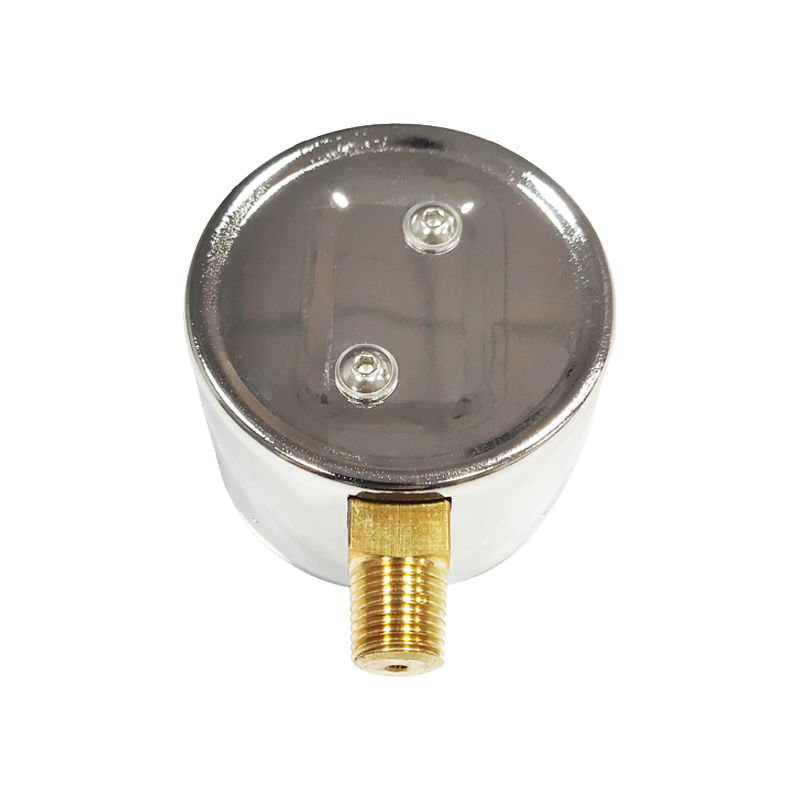
Dec . 13, 2024 19:07 Back to list
Diaphragm Seal Pressure Gauges for Accurate Measurement in Various Applications
Understanding Diaphragm Seal Type Pressure Gauge Products
Pressure measurement is a crucial aspect of various industrial processes, ensuring safety, efficiency, and quality control. One of the most reliable and robust solutions for measuring pressure in challenging environments is the diaphragm seal type pressure gauge. This article delves into the features, advantages, applications, and selection criteria for diaphragm seal pressure gauges, highlighting why they are an essential instrument in many industries.
What is a Diaphragm Seal Type Pressure Gauge?
A diaphragm seal type pressure gauge comprises two main components the diaphragm seal and the pressure gauge. The diaphragm seal serves as a mechanical barrier, which isolates the pressure sensing element of the gauge from the process fluid. Typically made from materials like stainless steel, PTFE, or other corrosion-resistant alloys, the diaphragm is flexible and can deform under pressure. The transmitted pressure is then indicated on the gauge, converting physical pressure into an easy-to-read format.
This design allows the pressure gauge to operate effectively in environments where direct exposure to the process media would either damage the gauge or compromise its accuracy. It is particularly useful in applications involving corrosive, viscous, dirty, or crystallizing fluids.
Key Features of Diaphragm Seal Pressure Gauges
1. Corrosion Resistance Diaphragm seals can be made from various metals and elastomers that provide resistance to corrosive chemicals and high temperatures, making them suitable for a range of applications in chemical processing, oil and gas, and wastewater treatment.
2. Isolation from Process Media By isolating the sensitive measuring element from the process fluid, diaphragm seal gauges protect against clogging, contamination, and corrosive damage, thereby prolonging the lifespan of the instrument.
3. Versatile Design Diaphragm seal gauges come in various designs, including flush-mounted and remote-mounted configurations. This versatility allows them to fit into many applications and environments, providing the best measurement capabilities.
4. Temperature Resistance Some diaphragm seal gauges are designed to handle high temperatures, which is essential in applications such as steam measurement or high-temperature chemical processes.
5. High Accuracy and Reliability With proper selection and installation, diaphragm seal type pressure gauges can offer high accuracy in pressure readings, ensuring reliable data for process monitoring and control.
Advantages of Using Diaphragm Seal Pressure Gauges
The use of diaphragm seal type pressure gauges offers numerous benefits
- Protection Against Contamination By keeping the measuring element away from the process fluid, these gauges reduce the chance of contamination and ensure accurate readings over time
.- Reduced Maintenance With fewer contacts and direct exposure to harmful fluids, diaphragm seal gauges typically require less maintenance and have greater durability compared to standard pressure gauges.
- Extended Service Life The materials used in diaphragm seals can withstand harsh conditions, thus increasing the overall life expectancy of the gauge.
diaphragm seal type pressure gauge products

- Enhanced Safety Isolating the gauge from hazardous fluids reduces the risk of leaks and failures, contributing to a safer working environment.
Applications
Diaphragm seal type pressure gauges are versatile instruments used in various industries, including
- Chemical Processing For measuring pressures in reactors or pipelines transporting aggressive chemicals. - Oil and Gas In wells, refineries, and pipelines, where corrosive substances are common.
- Pharmaceuticals For sterile, clean environments where contamination must be minimized.
- Food and Beverage Ensuring sanitary conditions while monitoring process pressures.
- Water and Wastewater Treatment For measuring pressures in applications dealing with sludge or corrosive water.
Selection Criteria
When choosing a diaphragm seal type pressure gauge, consider the following criteria
1. Process Conditions Analyze the temperature, pressure range, and nature of the media (corrosive, viscous, etc.) to select appropriate materials and specifications.
2. Mounting Configuration Decide between flush-mounted or remote-mounted designs based on installation requirements and space constraints.
3. Accuracy Requirements Identify the necessary level of accuracy for your application to ensure proper performance.
4. Calibration Choose a gauge that provides ease of calibration and adjustment to maintain ongoing accuracy.
5. Environmental Conditions Ensure that the gauge can withstand environmental factors such as high humidity, temperature fluctuations, or exposure to chemicals.
Conclusion
Diaphragm seal type pressure gauges play a pivotal role in enhancing measurement accuracy and reliability across various industries. By isolating the sensitive gauge components from harsh process conditions, these instruments not only extend service life but also improve safety and reduce maintenance needs. Understanding their features, advantages, and applications can help professionals select the right gauge for their specific requirements, leading to optimal process performance.
-
High-Precision 5 Valve Manifold Differential Pressure Gauge Suppliers
NewsApr.29,2025
-
High-Precision Diaphragm Vacuum Pressure Gauges Manufacturers & Quotes
NewsApr.29,2025
-
Omega Differential Pressure Gauges High Accuracy & Durability
NewsApr.28,2025
-
Low Pressure Differential Pressure Gauges Precision Solutions & Quotes
NewsApr.28,2025
-
Digital Diaphragm Pressure Gaauge Precision Measurement & OEM Quotes
NewsApr.28,2025
-
Differential Pressure Gauge China Price High-Accuracy & Best Quotes
NewsApr.28,2025
